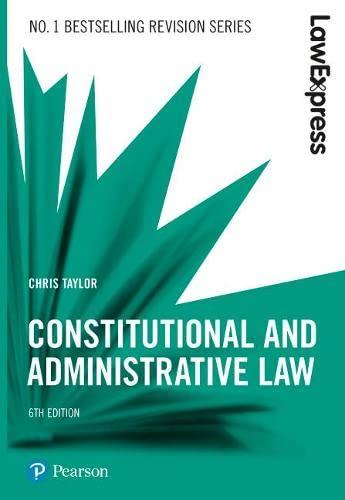Question
USA Patriot Act The USA PATRIOT Act, officially known as the Uniting and Strengthening America by Providing Appropriate Tools Required to Intercept and Obstruct Terrorism
"USA Patriot Act"
The USA PATRIOT Act, officially known as the Uniting and Strengthening America by Providing Appropriate Tools Required to Intercept and Obstruct Terrorism Act, is a U.S. law enacted in response to the September 11, 2001 terrorist attacks. It was signed into law by President George W. Bush on October 26, 2001. The act was designed to enhance the government's ability to investigate and prevent acts of terrorism.
Key provisions of the PATRIOT Act include:
Enhanced Surveillance Powers: The act expanded the government's surveillance capabilities, allowing authorities to monitor communications and access business records more easily.
Information Sharing: It facilitated increased information sharing and cooperation among law enforcement agencies, intelligence agencies, and other government entities.
Financial Investigations: The PATRIOT Act granted broader authority to track and investigate financial transactions to uncover and disrupt funding for terrorist activities.
Immigration Measures: It included provisions related to immigration, making it easier to detain and deport individuals suspected of involvement in terrorist activities.
Roving Wiretaps: The act allowed for roving wiretaps, permitting the monitoring of multiple communication devices used by a targeted individual.
Lone Wolf Provision: The act introduced the "lone wolf" provision, allowing surveillance of individuals not necessarily affiliated with a known terrorist organization.
The PATRIOT Act has been both praised for its effectiveness in enhancing national security and criticized for potential violations of civil liberties. Concerns were raised about the broad powers it granted to law enforcement and the potential for abuse.
Over the years, there have been debates and legal challenges regarding the constitutionality and necessity of certain provisions. Some portions of the act have been amended or allowed to expire, and there have been ongoing discussions about finding a balance between national security and individual privacy rights. Extensions and revisions have occurred over the years to address these concerns while maintaining efforts to combat terrorism.
1. Identify and articulate the primary arguments in favor of the provisions from a national security perspective.
2. Identify and articulate the primary arguments against the provisions from a civil liberties and constitutional perspective.
3. Include perspectives from legal scholars, civil rights advocates, and government officials.
Step by Step Solution
There are 3 Steps involved in it
Step: 1

Get Instant Access to Expert-Tailored Solutions
See step-by-step solutions with expert insights and AI powered tools for academic success
Step: 2

Step: 3

Ace Your Homework with AI
Get the answers you need in no time with our AI-driven, step-by-step assistance
Get Started


